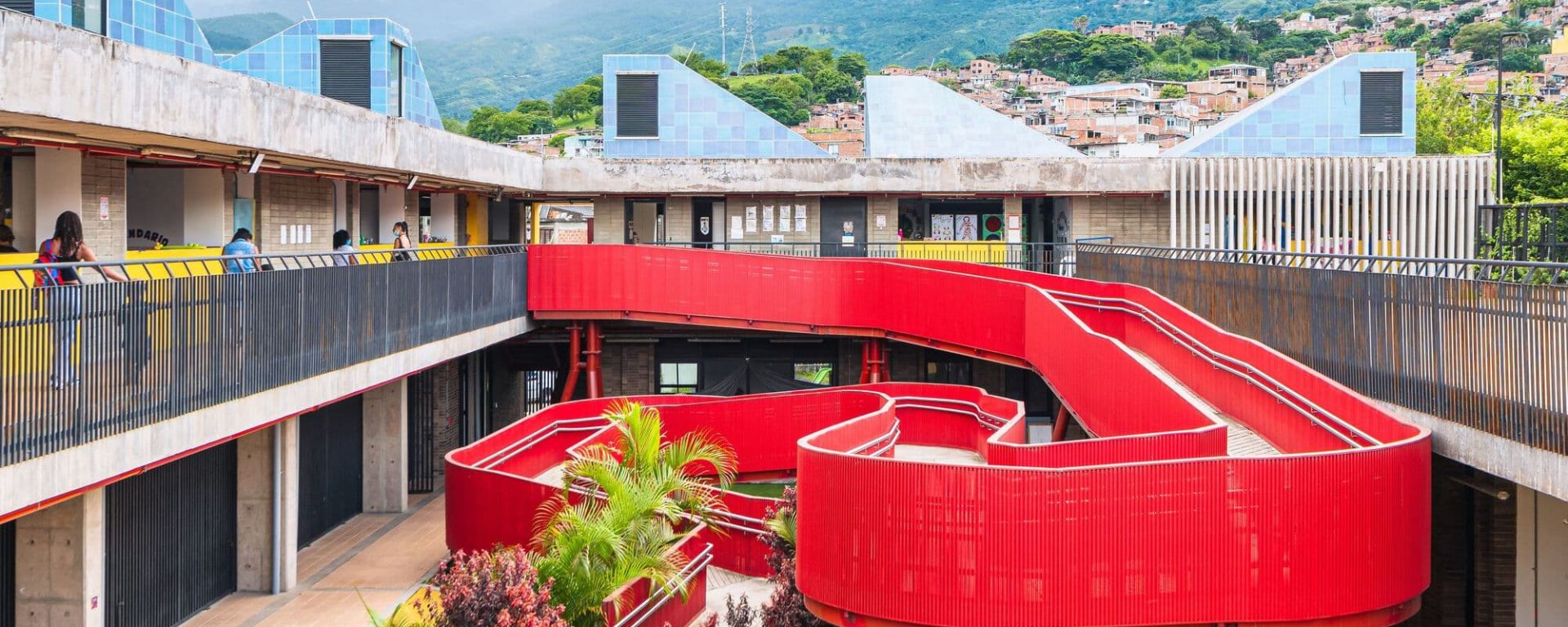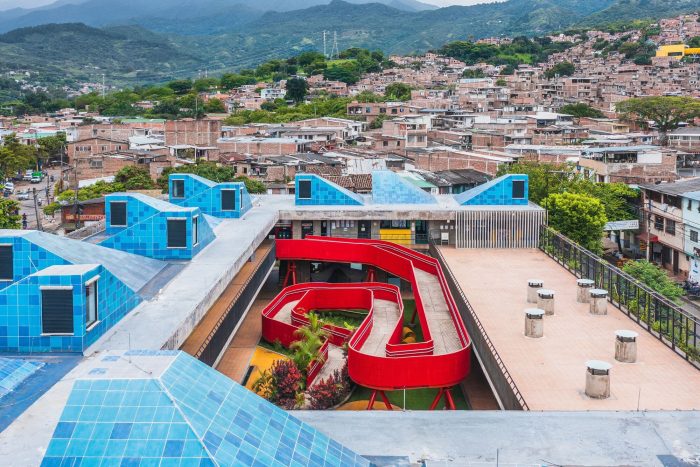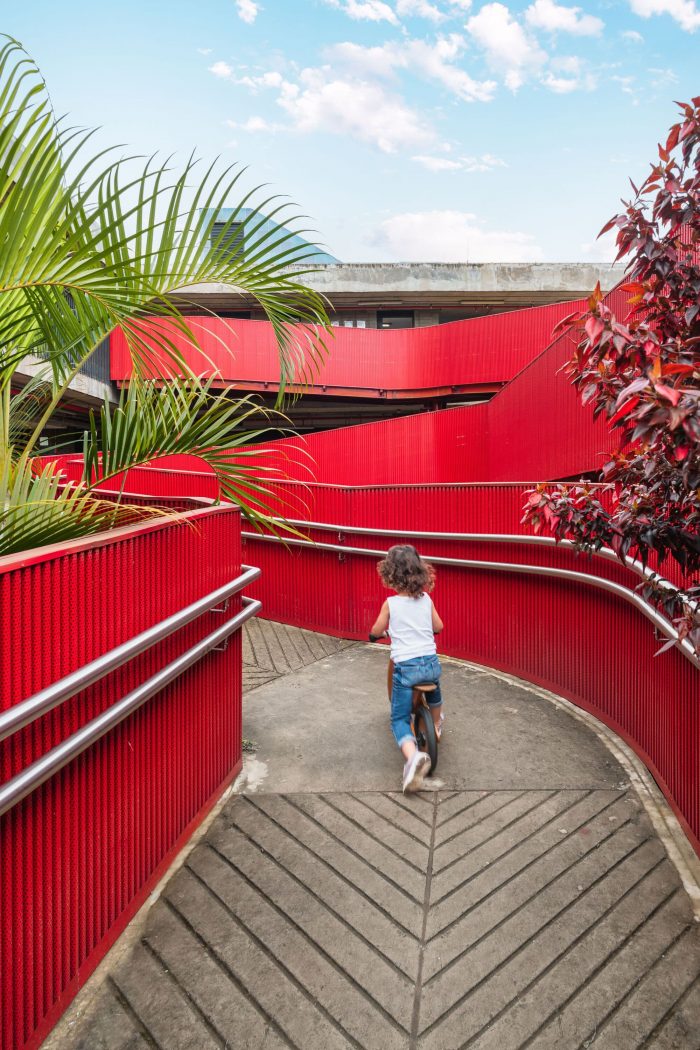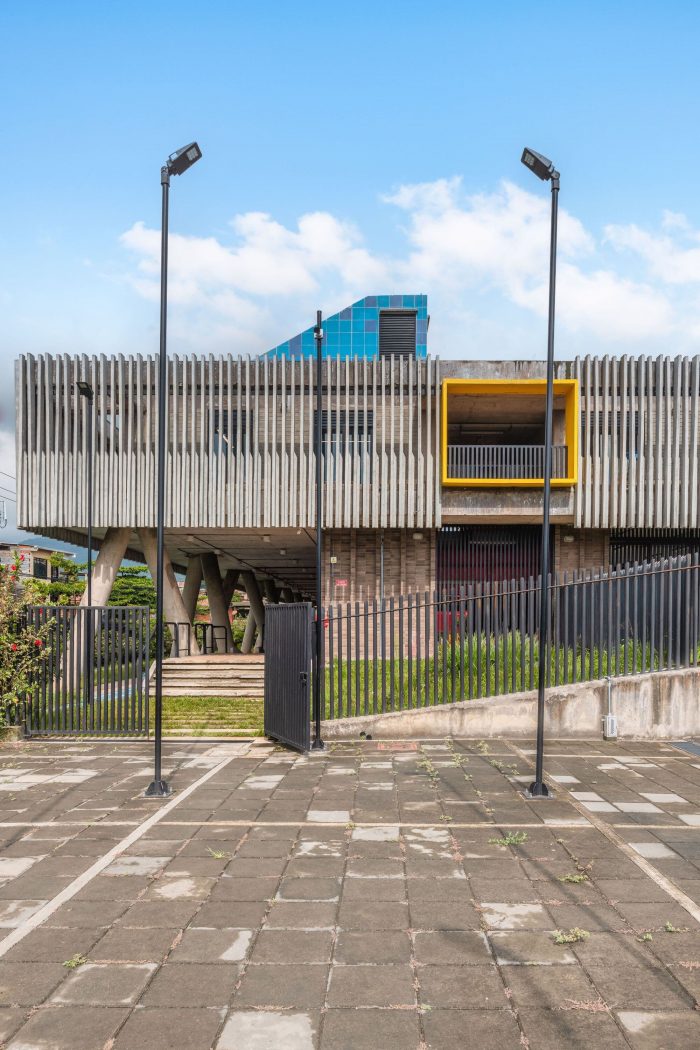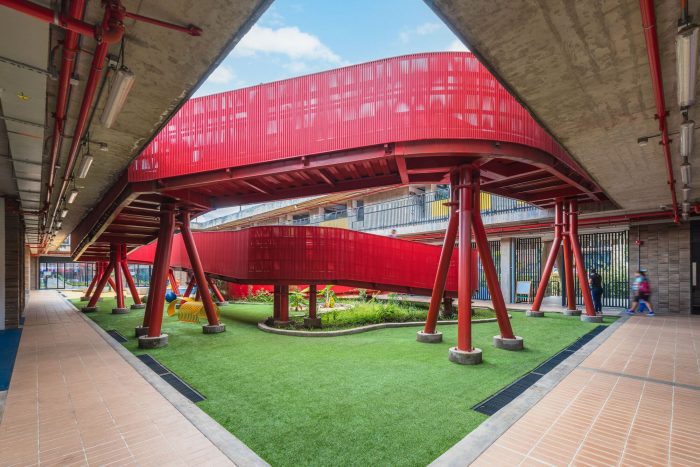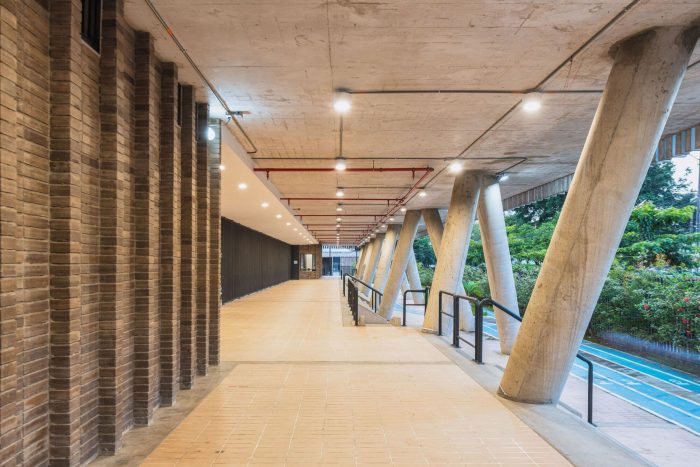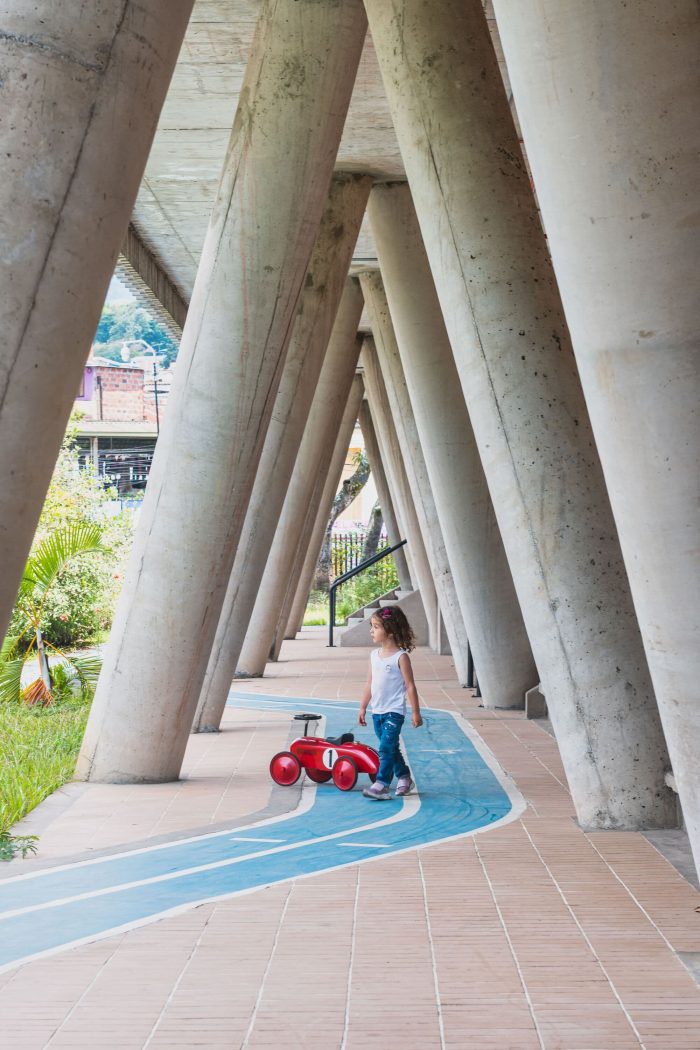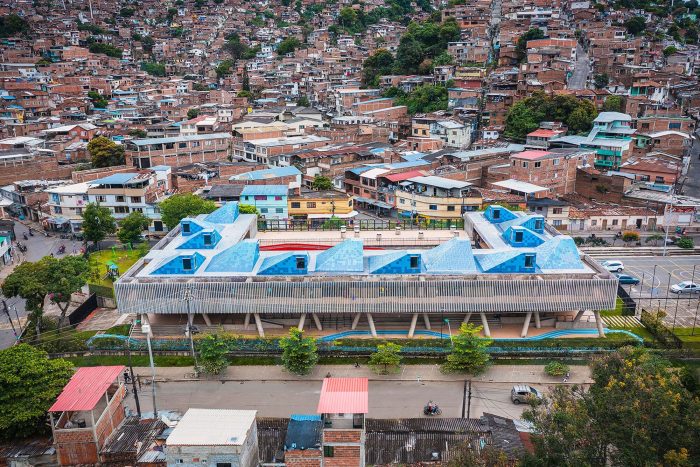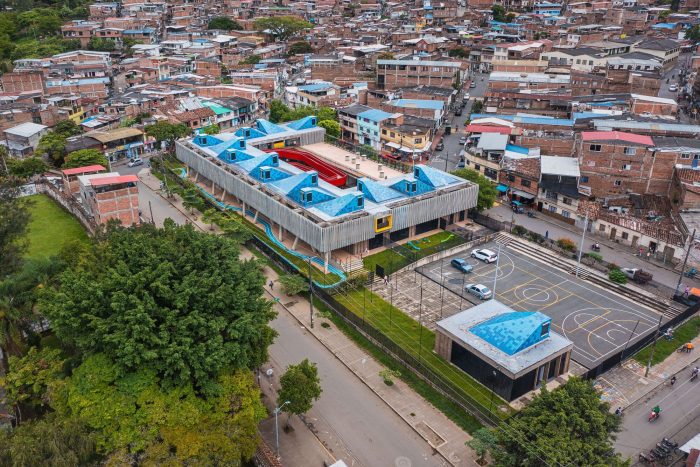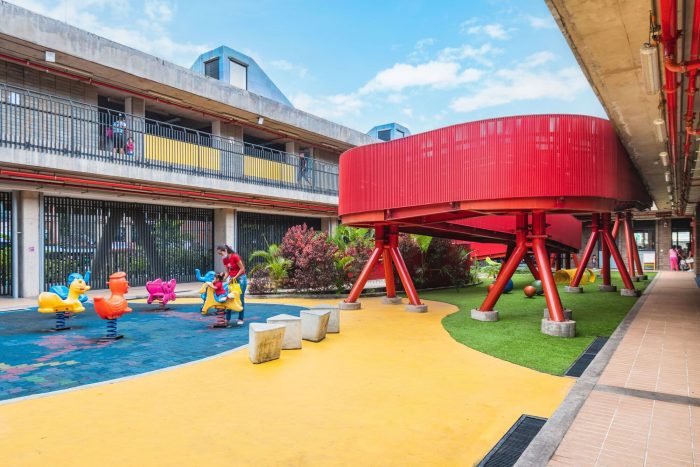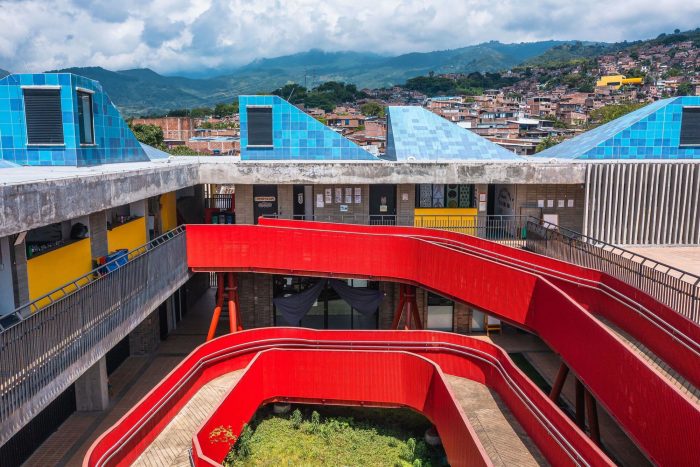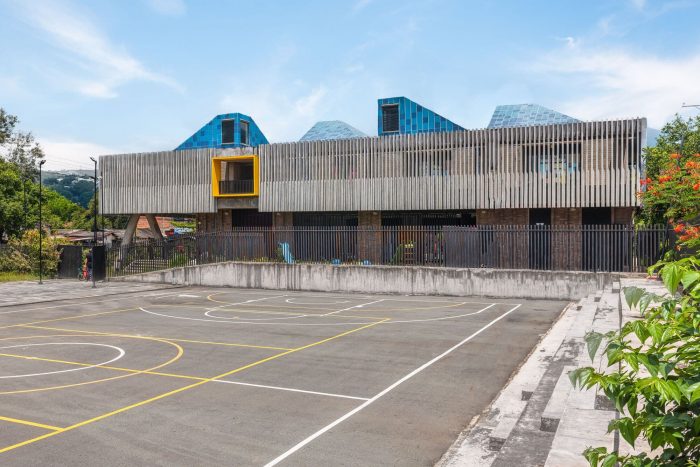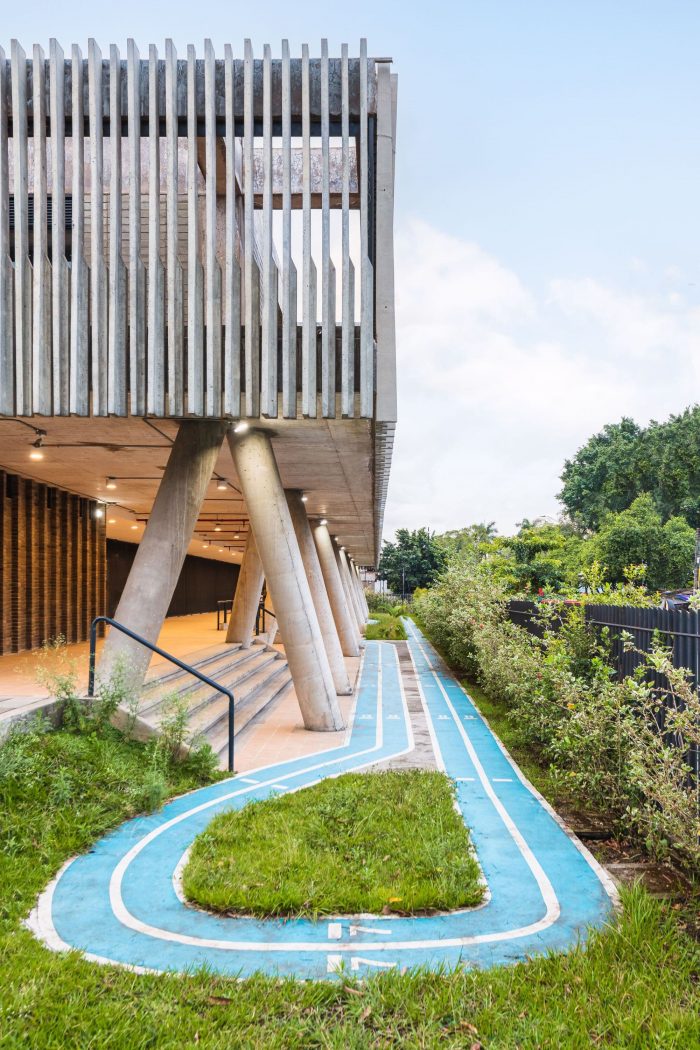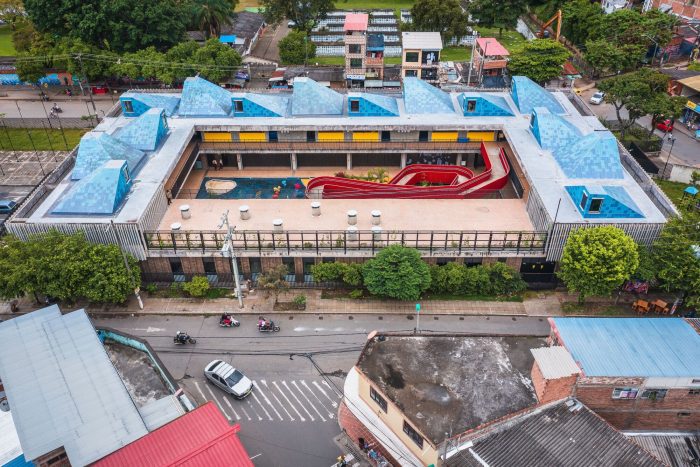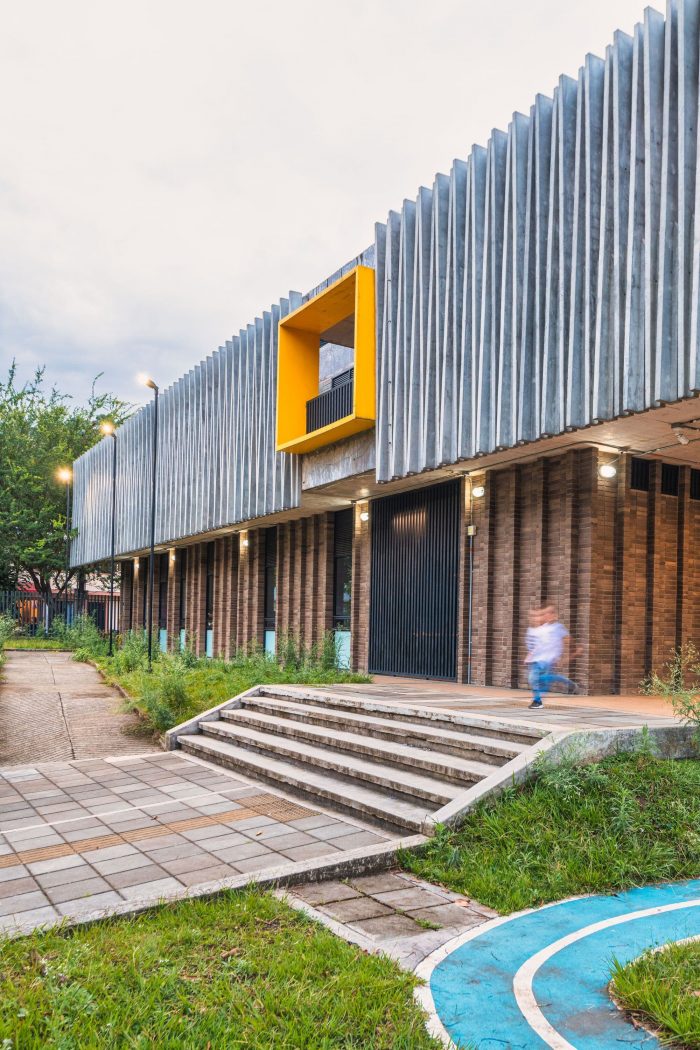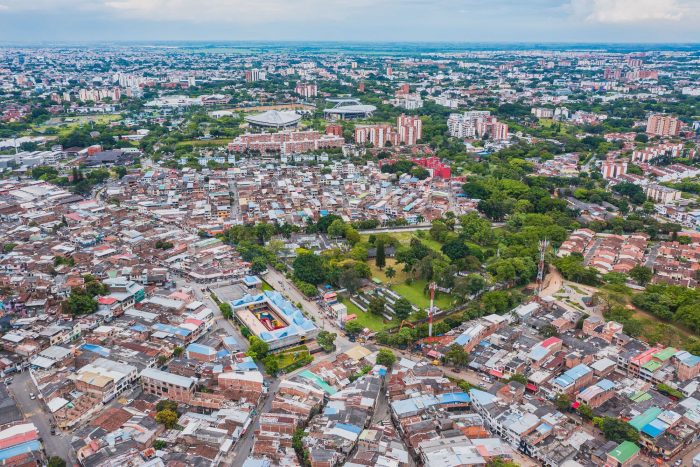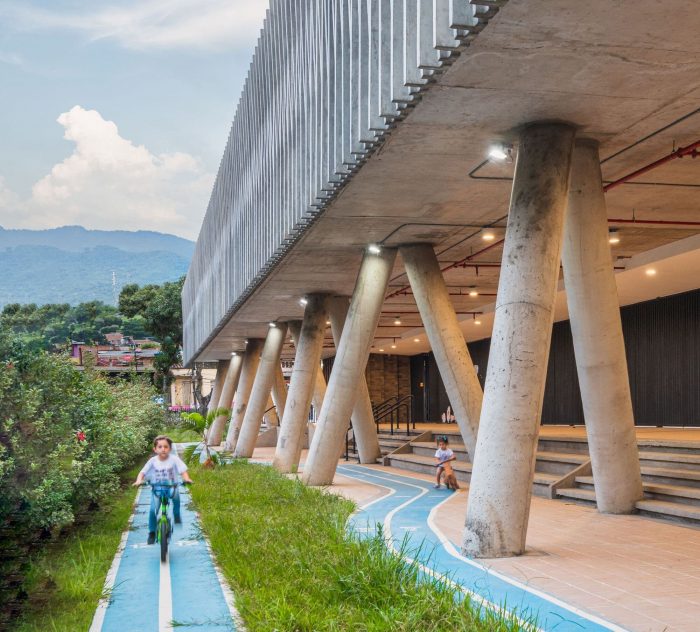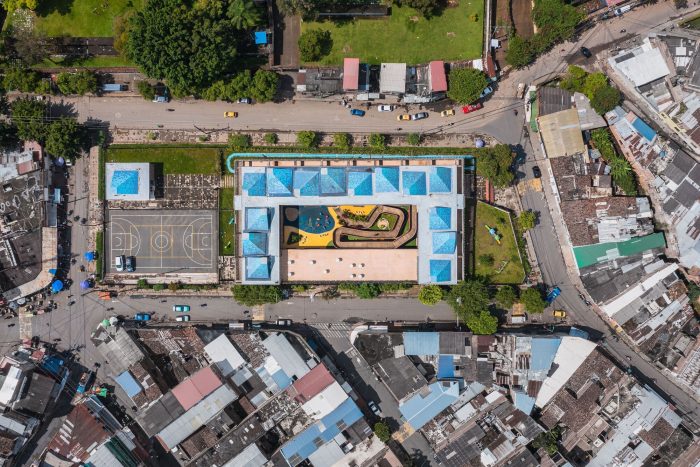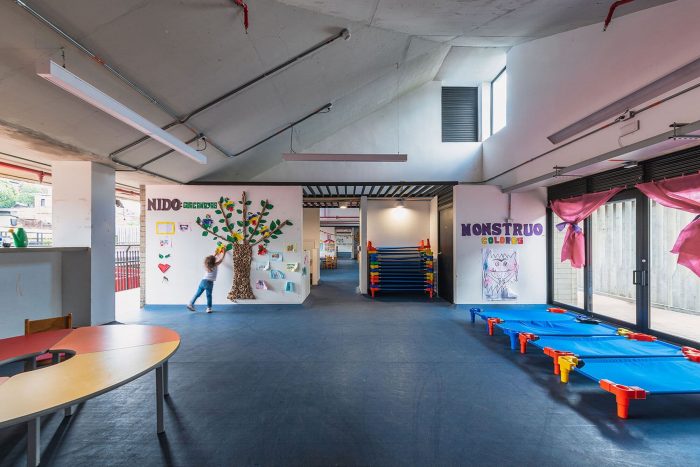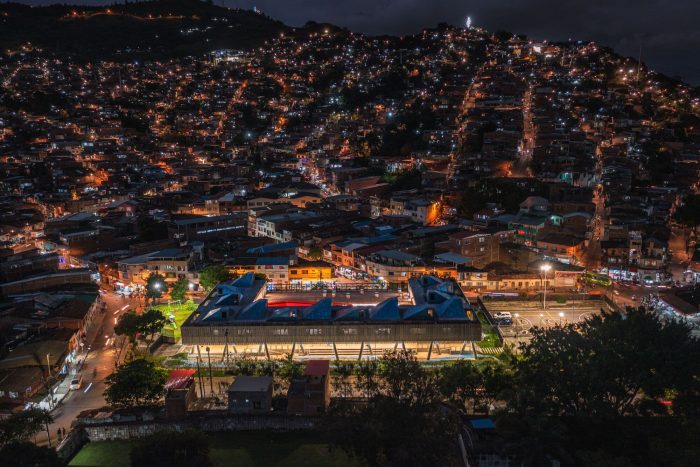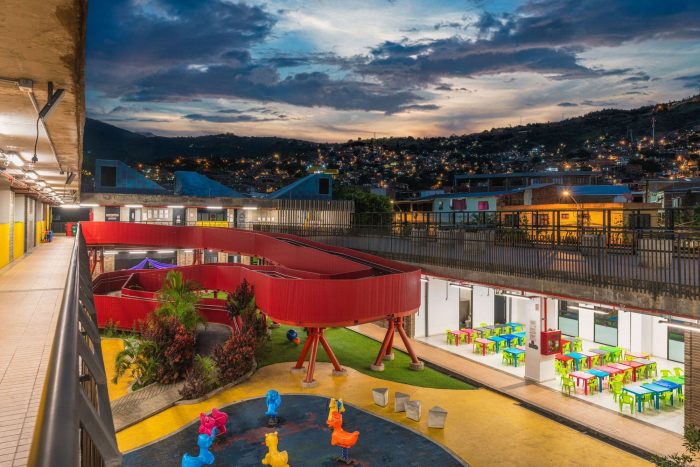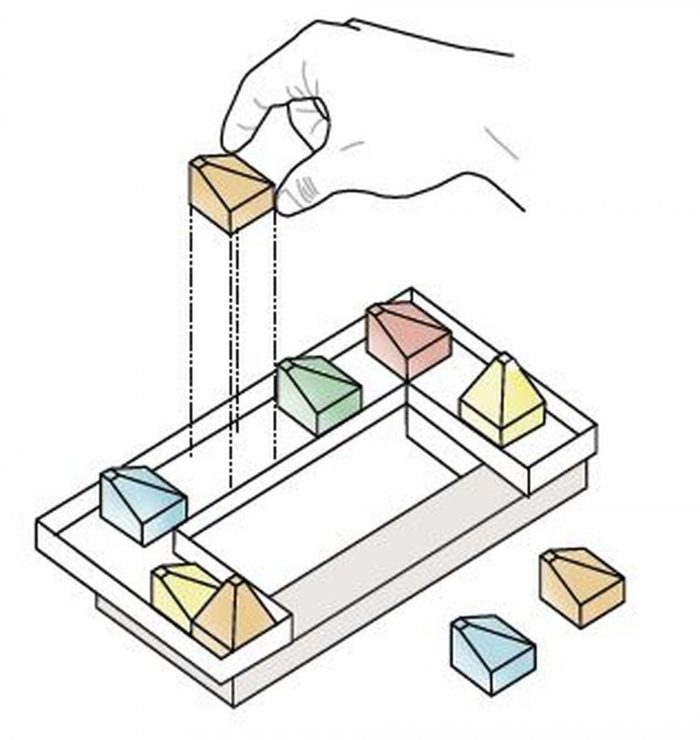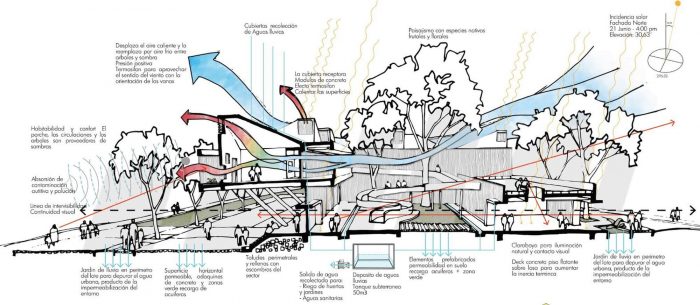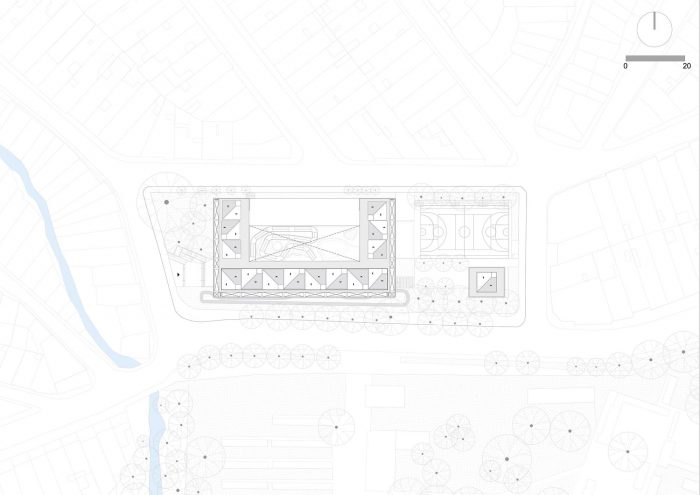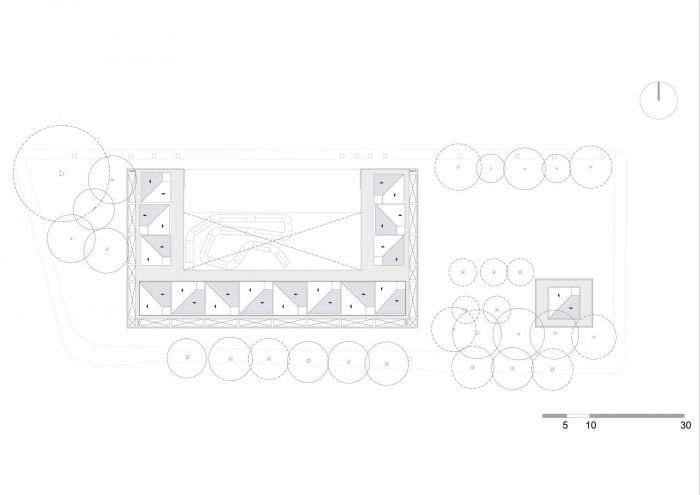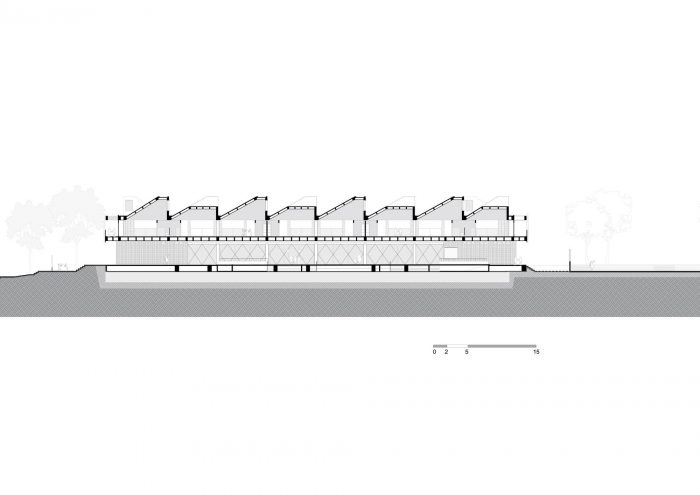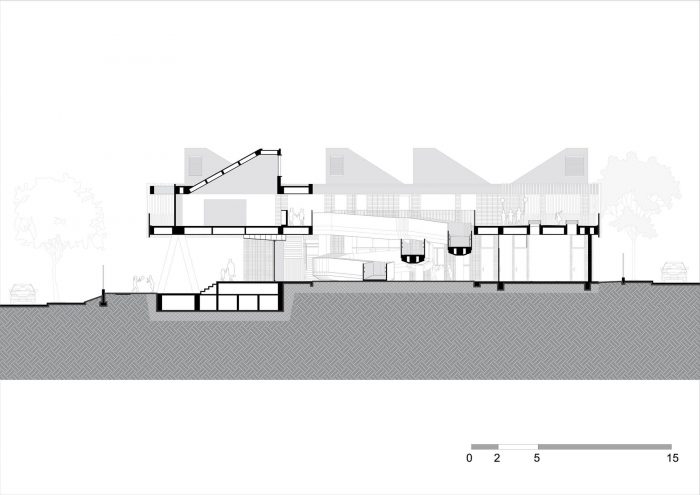Jaime Rentería儿童发展中心位于Siloé,一个在卡利市有一百多年社会和文化历史的流行地区。它的非正式起源是在该地区煤炭开采占主导地位时,采矿家庭的定居点。
The Jaime Rentería child development center is located in Siloé, a popular area with more than one hundred years of social and cultural history in the city of Cali. Its informal origin arises from the settlements of mining families when coal exploitation predominated in the area.
海梅-伦特里亚(Jaime Rentería)儿童发展中心位于西罗埃(Siloé),这是一个在卡利市有一百多年社会和文化历史的流行地区。它的非正式起源来自于该地区煤炭开采占主导地位时的采矿家庭的定居点。
The Jaime Rentería child development center is located in Siloé, a popular area with more than one hundred years of social and cultural history in the city of Cali. Its informal origin arises from the settlements of mining families when coal exploitation predominated in the area.
在这种情况下,儿童发展中心是一个例子,说明公共建筑在哥伦比亚是一种政治工具,说明领导人如何通过建筑来实现他们反对社会福利理念的立场。
In this context, the child development center is an example of how public architecture is a political instrument in Colombia, of how leaders materialize their positions against the idea of social welfare through buildings.
通过这个也被称为 “冠军的摇篮 “的建筑,市政府有机会展示教育是一种建设性的行为,承认一个为城市做出重大贡献的社区的价值。他在西罗埃重建了信心和归属感,西罗埃是哥伦比亚唯一拥有两枚奥运奖牌的社区,还有许多其他成就,这些成就都是由那些从小就在其错综复杂的街道、楼梯和通道上玩耍的运动员们取得的。
With this building, also called “Cradle of Champions”, the municipality had the opportunity to show education as a constructive act, recognizing the value of a community that has made significant contributions to the city. He rebuilt confidence and a sense of belonging in Siloé, the only neighborhood in Colombia that has two Olympic medals, among many other achievements, achieved by athletes who played in its intricate streets, stairs, and passages since they were children.
在这种情况下,该项目是一项城市行动,它建立了公民意识,恢复了该地失去的环境价值,为社区生活提供了新的支持领域,通过一个具有生态和环境潜力的包容性公共空间将人们联系起来,围绕着一座儿童建筑,其机构形象是对该环境正式化的有力注解。
In this context, the project is an urban action that builds citizenship and recovers the lost environmental values of the place to offer new areas of support for community life, connecting people through an inclusive public space, with ecological and environmental potential, around a building for children, whose institutional image is a powerful bet for the formalization of the context.
由于他们是社区中最年轻的孩子,为了保护他们,建议将他们与环境的强度隔离开来,将教室设在一个安全的高度,像一个巢穴。这种双重现象,即需要向环境开放以提供新的社会接触区域,同时又需要关闭以控制和隔离未成年人,这在建筑的结构中是决定性的。教室与公共楼层的分离是激活该建筑的城市效应的决定。
As they are the youngest children in the community, it is proposed for their protection to isolate themselves from the intensity of the environment, locating the classrooms at a safe height, like a nest. This double phenomenon, the need to open up to the context to provide new areas of social contact, and at the same time the need to close in order to control and isolate minors, was decisive in the architecture of the building. The separation of the classrooms from the public floor was the decision that activated the urban effect of the building.
一个简单的体量策略将门廊和游戏区联系起来。通过释放平面,将墙向后移动,并将体积支撑在柱廊上,创造了一个门槛,解决了从公共空间到公共空间的过渡。这个建筑和城市之间的调解空间具有一定的规模,赋予了空间质量,保护了阳光,并为来找孩子的人提供了款待。
A simple volumetric strategy relates a porch to a play area. By freeing up the plan, moving the wall back, and supporting the volume on a colonnade, a threshold is created that resolves the transition from the public to the common. This mediation space between the building and the city has a scale that gives spatial quality, protects from the sun, and offers hospitality to the people who come for their children.
“孩子的大脑只有在有情感的情况下才会学习” 弗朗西斯科-莫拉
一些建筑元素重视非正式的,使建筑充满意义。这些概念性的转移将建筑固定在一个部门的特定环境中,在那里,一切都在服务和包含。
“A child’s brain only learns if there is emotion” Francisco mora
Some architectural elements value the informal and fill the building with meaning. These conceptual transfers anchor the building to the specific circumstances of a sector, where everything serves and contains.
通过打开围墙的栅栏,门槛可以作为天井的延伸。一个 “朋友的脚 “柱廊交替着它的位置,支撑着教室的体积,给人以重量和轻度、运动和稳定的感觉,这是典型的山坡上的建筑。一个有吸引力的坡道卷使内部的操场充满活力,并代表了房屋之间的路径、楼梯、隧道和有机通道。独立的天窗盖交替使用,在体量上画出一个变化的轮廓。它们被镀成蓝色,在邻里和建筑之间的距离上造成一种相互可见的效果。
The threshold can be used as an extension of the patio by opening the bars of the enclosure. A “friend’s foot” colonnade alternates its position and supports the volume of classrooms, giving the sensation of weight and lightness, of movement and stability, typical of hillside-stilt buildings. An attractive ramp roll dynamizes the interior playground and represents the paths, stairways, tunnels, and organic passages between the houses. The independent skylight covers alternate their position and draws a changing profile in the volume. They are plated in blue to cause an inter-visibility effect at a distance between the neighborhood and the building.
主色调弥补了体量的外部硬度和其石质材料的特点。周边的天井作为教室的延伸,容纳果园,并面向街道。这个由预制混凝土构件制成的垂直盲道是一个防晒屏,反过来,在一个帮派之间经常发生冲突的地区,它也是一个防止流弹的保护罩。
The primary colors compensate for the external hardness of the volume and its stony materiality. A perimeter patio serves as an extension for the classrooms, houses the orchards, and faces the street. This vertical blind made of prefabricated concrete elements serves as a sun protection screen, and, in turn, is a shield from stray bullets in an area of frequent confrontations between gangs.
Architects: Espacio Colectivo Arquitectos
Area : 2800 m²
Photographs :Santiago Robayo
Manufacturers : Hunter Douglas
Lead Architects : Aldo Marcelo Hurtado, Carlos Hernan Betancourt
Collaborators : Ángela Andrade M., Vanessa Toro Castaño, Josman Rojas Montes, Jessica Rojas Benavides, Julián Danilo Londoño, Emmanuel Viveros, Miguel Ángel Canaval, Juan Pablo González, Laura Urueña Serna, Sofia Zuluaga Ocampo, María Fernanda Soler, María Paula Martínez, German Rosero Ocaña, Jhonatan Alberto Cruz, Paola Daniela Bolaños, Edier Andrés Segura, Felipe Bessolo, Omar Velásquez
Promoter : Secretaria de Educación de Santiago de Cali
City : Cali
Country : Colombia

